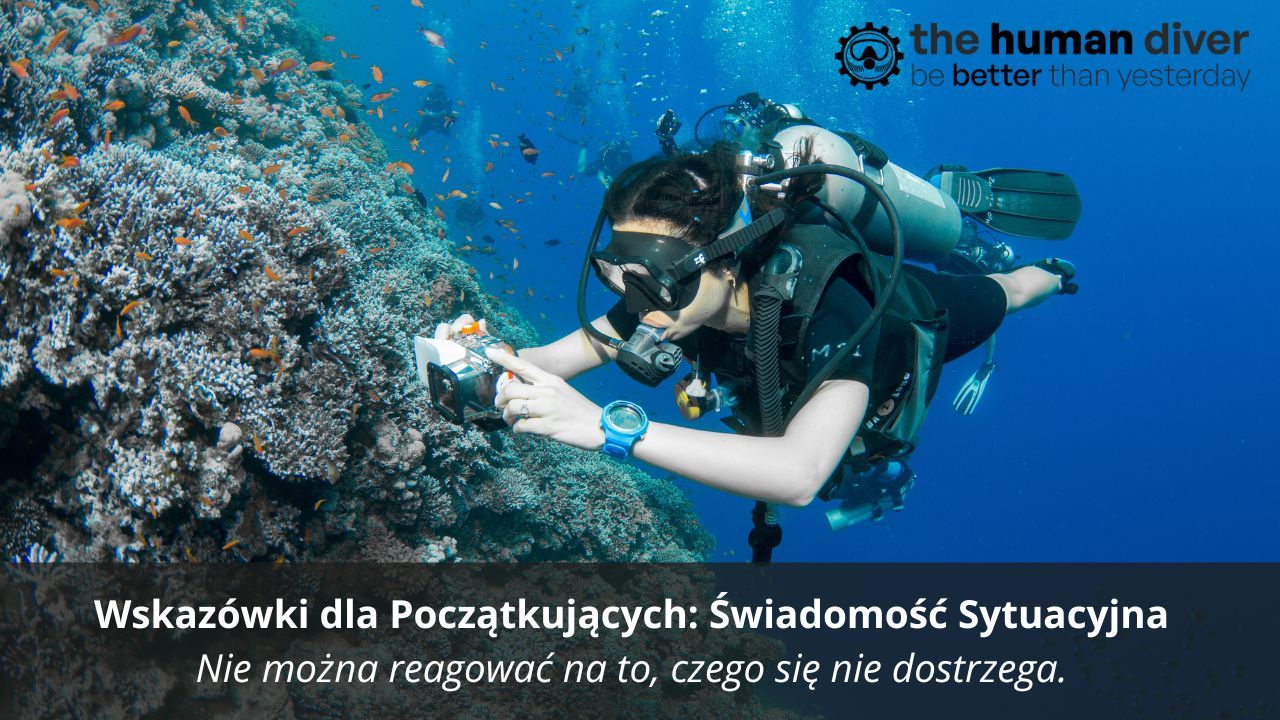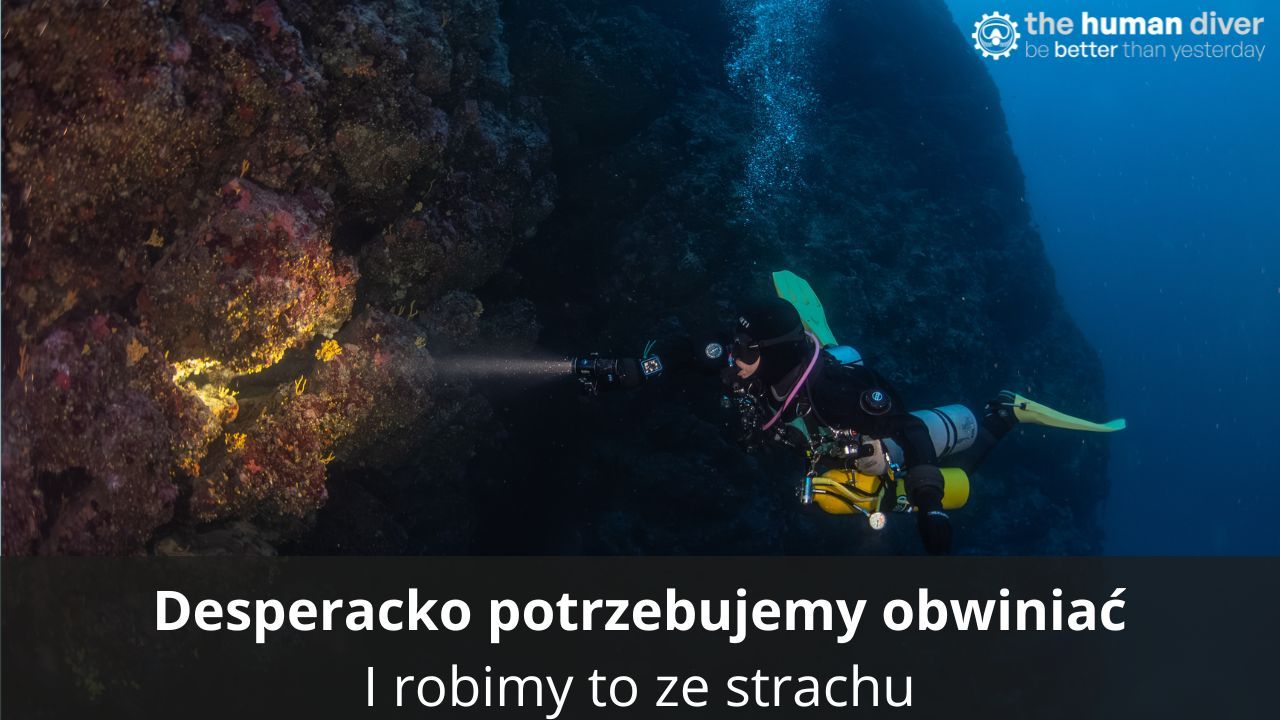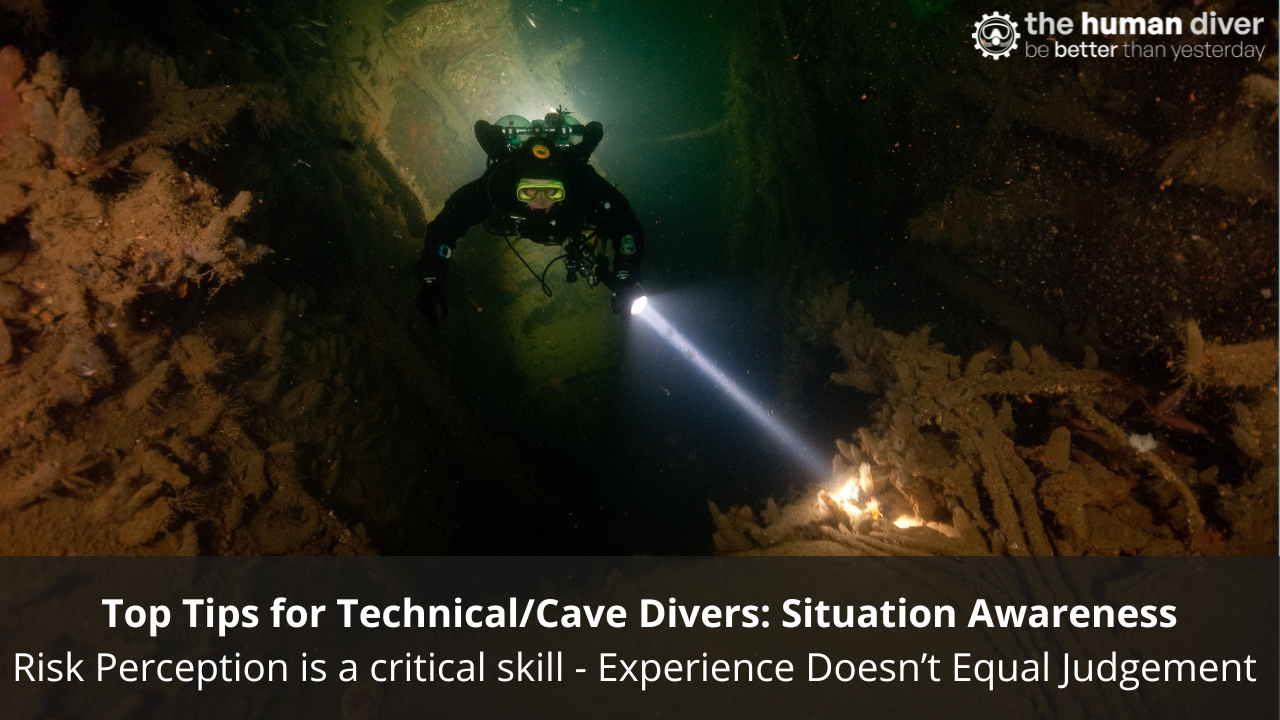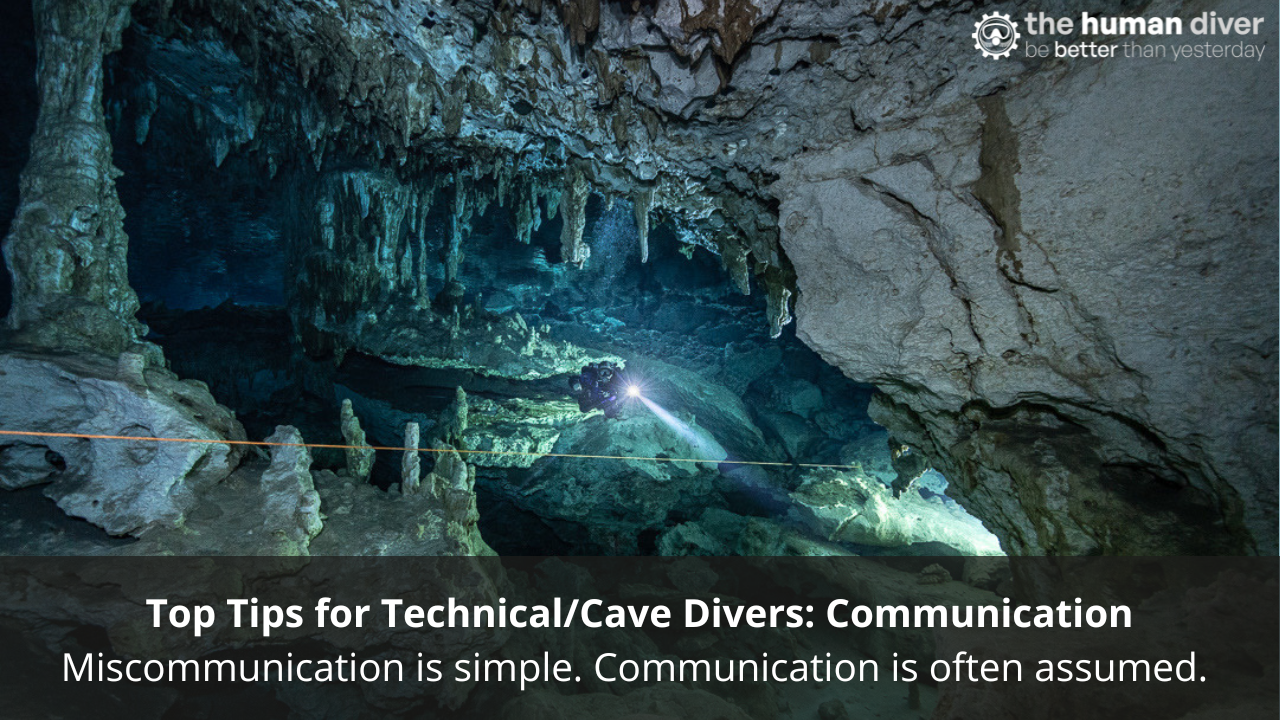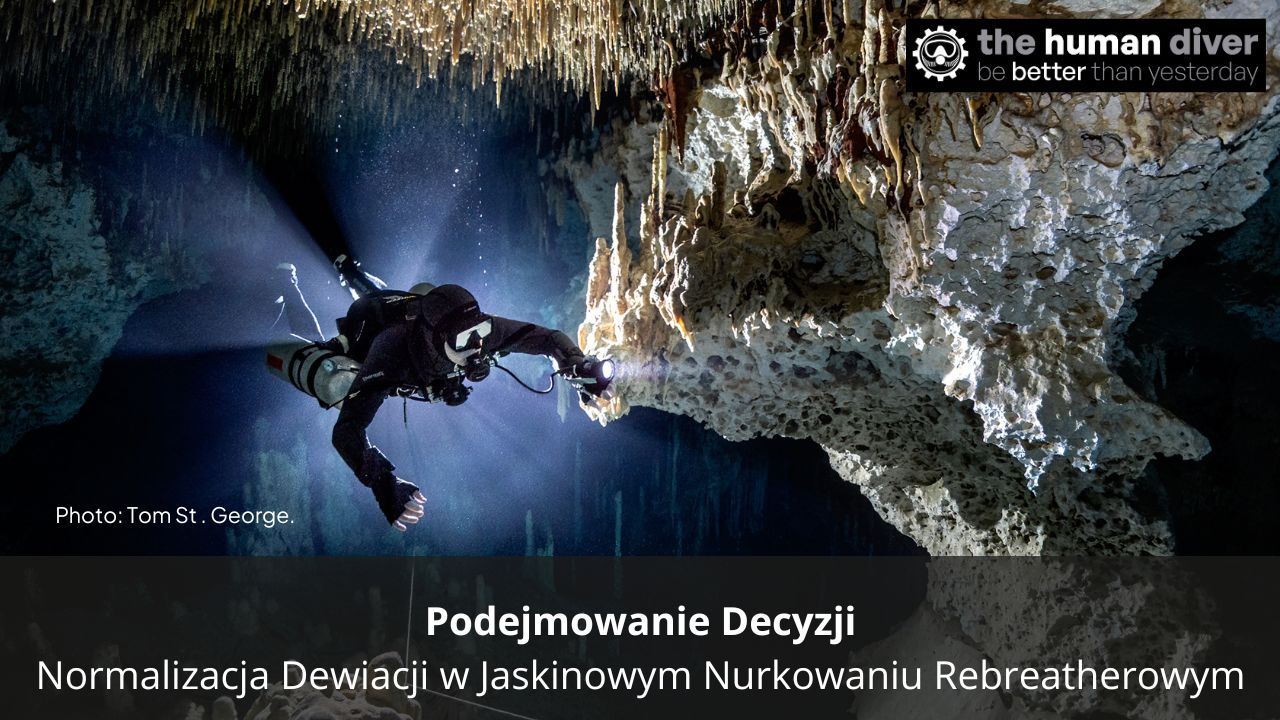
What one thing...
Dec 11, 2022...are you going to focus on and change?
Yesterday morning, six members of The Human Diver team started learning a new piece of software that we will start using next year to take our Human Factors and Non-Technical Skills training to the next level in the face-to-face programmes and also provide a diagnostic tool for teams and individuals who want to see where they are and identify areas for improvement.
The GemaSim platform we have used over the last six years has been brilliant in creating a psychologically-safe learning environment in which we can coach, facilitate, and educate divers about the knowledge and practice surrounding HF and Non-Technical Skills needed to improve diving safety. However, it doesn't quite meet the needs of where we are going and so we are changing tools.
It doesn't take much to identify opportunities for improvement
One thing that struck the team this morning was how little was required in terms of an experience to create learning from when it comes to teamwork, collaboration, leadership, communication, decision-making and situation awareness.
From the first 10-minute mission, we were able to baseline the team's performance and identify key areas that could be improved, we then chose three critical factors we were going to address, and then we incorporated them into the next mission. For my team, we focused on:
- role clarity so we didn't drop a ball in the dynamic situation we were in,
- closing the communication loop so we understand what others had said and what we needed to do,
- ensure we prioritised the key task, even when other things were going on.
During the next mission, we increased our scores, although there was a significant amount of self-induced performance distress because we wanted to improve. What was more impressive was the other team though. They had managed to double their score because they had identified critical factors in how their team was dysfunctional in the first mission and addressed them.

Building Blocks & Marginal Gains
If we want to make a large change to our individual or team performance, we are often faced with an elephant of a problem - we can't eat it all at once, so which bit do we eat first?
In diving, there are two closely linked skills, that once nailed, make the rest of your diving so much easier.
- Neutral buoyancy, especially when task loaded.
- 'Appropriate' trim. This normally means flat in the water to improve many factors of moving through the water with limited drag and maintaining visibility, but 'appropriate' can also be vertical if the environment means you have to swim vertically.
Once those building blocks are set, then it is much easier to do other things. There is a standard joke that GUE Fundamentals just teaches you how to remain steady in the water at 6m, without moving your hands and feet. The question is often heard, "How hard can it be to remain at 6m, launch a dSMB, then ascend, under control, doing an air share ascent?" For many people, it is hard. However, if you can do that, then you can move on to further training. Without that foundation, then learning more advanced skills will be an issue.

In terms of the interdependent non-technical skills we have (situation awareness, decision-making, communication, leadership/followership & teamwork, the first part of effectively operating as a team is clarity of communication. If the communication is spot on, it is easier to transfer information to help build a shared mental model, so that everyone knows what has happened, what is happening now, and what will happen in the future. This is what we focused on in missions 1 and 2 - improving the quality of the communication, giving the rest of the team the 'goldilocks' amount of information, not too much, and not too little.
Once the communication was sorted, then we could move on to task priority to ensure that we were achieving the goals we had planned for and briefed. The debrief at the end which looked at what we did well and why, what we can improve on, and how, was used to then develop an action plan for creating change.
We didn't pick huge goals, we picked little things, did them, saw if the change worked, and then moved on to the next thing. Each time we made an improvement to one small thing in terms of behaviour, the effect was noted and 'measured', showing that it was worthwhile adopting the new practices. We could see how little things made big differences.
By continually making small improvements, the effect is quite surprising, as shown by this extract from James Clear's 'Atomic Habits'. You can read more about marginal gains here and how they were applied to Team Sky by Sir David Brailsford.
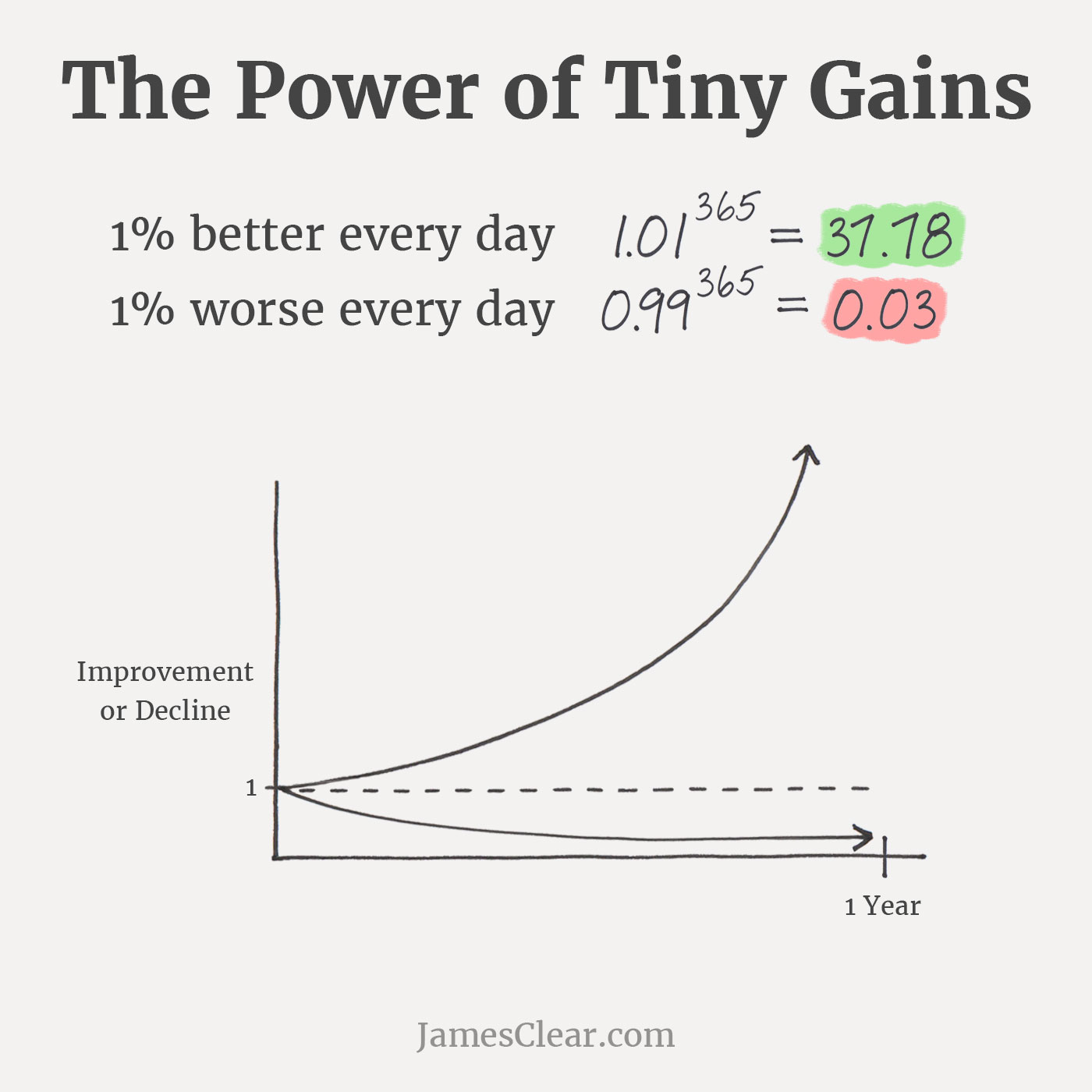
What can I do to make an Improvement?
I often get asked during presentations, webinars, or conferences, what is the one thing I can do to improve the knowledge and practice of Human Factors, Non-Technical Skills and a Just Culture in the diving community. The following four examples are what many can do with little effort to improve diving safety and get the message about human factors in diving out there.
But before we get into those, I'll put something from JW Goethe out there. "Knowing is not enough, we must apply. Willing is not enough. We must do.". Change comes from action, and most people don't like change because it requires some form of effort to go from one state to another. If you want to create change, you have to do something, not just read about it.
- Look at the world through a curious lens, not a judgemental one. Look at the world using the concept of 'local rationality' - how did it make sense to THEM for THEM to do that? It is easy to look at an adverse event and wonder how what they did could ever make sense to THEM, but using MY own experiences. It isn't your experiences, knowledge and feelings that are important, it is the other person's, and you can only find that out if you have a curious conversation, not a judgemental one, with the other party. If you see someone being overly critical about an event, ask curious questions.
- Run a DEBrIEF after a dive. The purpose of a debrief is to improve learning. Debriefs require a change in behaviour, a change that is hard to bring about because of the way debriefs are normally run - fix what went wrong as opposed to learning from what happened. An effective debrief is set up so that we are able to complete the following key behaviours:
- Reflect on the activity (how do we feel and understand what happened),
- Rationalise the experience and look at 'what if...' scenarios to look at whether we were good or lucky,
- Optimisation (what are we going to change and where do we go from here?)
You can download a DEBrIEF guide from here www.thehumandiver.com/debrief and this gives divers (and others) guidance on how a debrief is run and what to do at each stage of the debrief.
- Run an 'If Only...' workshop. You can download the guide from here www.thehumandiver.com/ifonly and it gives you all the information you need to run a 90-min workshop (that will likely last much longer than that!) to explore the multiple factors that go into unintended outcomes.
- Share a story of something that has happened to YOU on a dive, digging into as much context as possible. It is by telling context-rich stories that we learn from the event. A recent account in the HF in Diving FB group exemplifies this where a diver commented on the guide's bailout cylinder not having the correct markings on it. The guide was only needed to gain access and without a guide, they couldn't dive the location. When the team challenged the guide about their markings after the dive, the guide shrugged it off. When asked why they didn't thumb the dive when they saw the markings, they replied that this was a very expensive dive and didn't want to risk losing the opportunity to dive this cave. While money shouldn't get in the way of safety, it is a huge factor for many divers and so it needs to be picked up during an exploration of what happened on the dive.
- Share a blog from www.thehumandiver.com/blog to your own social media or club pages. If you can share your learning from the blog, even better! There are now more than 150 blogs covering all aspects of HF in diving, from novice divers to experienced CCR trimix divers or instructor trainers.
- If you are an instructor or dive centre, contact Gareth for details of the affiliate and referral programmes and how you can build the Essentials class as part of your pre-learning for classes. Some dive centres are now including the Essentials as part of their Rescue class (or equivalent). Note, you must be a graduate of the Essentials class, a Level 1 webinar series class or a face-to-face programme.

A Blizzard starts with a Snowflake
I've purposely picked this metaphor rather than every storm starts with a raindrop because snowflakes are often seen as negative, weak people, and yet every snowflake is unique, and when many flakes land on the surface, they can create a huge change!
Building human factors into your diving and diving programmes isn't difficult. However, it does require you to look at what you do with a critical, informed eye. Most people, once they have gone through some form of human factors training, do not see the world in the same way again. They see how systems and context influence behaviours and that continuously blaming individuals for making the same mistakes is not going to change anything.
Own the change.
Linked Blogs:
https://www.thehumandiver.com/blog/knowledge-is-not-enough-we-must-apply
https://www.thehumandiver.com/blog/the-power-of-one

Gareth Lock is the owner of The Human Diver, a niche company focused on educating and developing divers, instructors and related teams to be high-performing. If you'd like to deepen your diving experience, consider taking the online introduction course which will change your attitude towards diving because safety is your perception, visit the website
Want to learn more about this article or have questions? Contact us.





